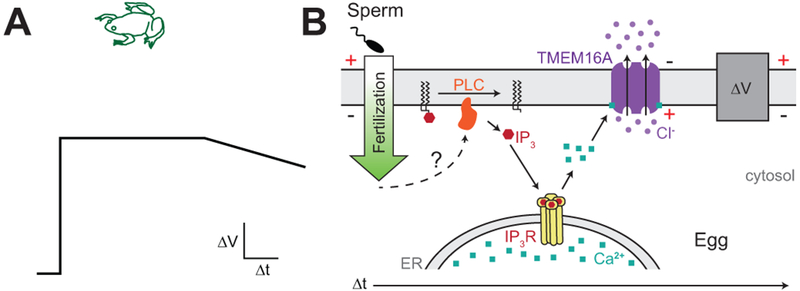Figure 1. The fast block in X. laevis.

A) Schematic of a depolarization recorded during fertilization of an egg from the African clawed frog, Xenopus laevis. B) Signaling mechanisms of the fast block in X. laevis eggs. Fertilization in frog eggs signals activation of PLC, which cleaves phosphatidylinositol 4,5-bisphosphate (PIP2) into IP3 and diacylglycerol (DAG). IP3 evokes Ca2+ release from the ER, and this Ca2+ opens the TMEM16A channel to induce Cl− efflux and membrane depolarization. After a prolonged depolarization, the membrane potential repolarized back to rest via unknown ionic movement (adapted from Wozniak et al. 2018c).
